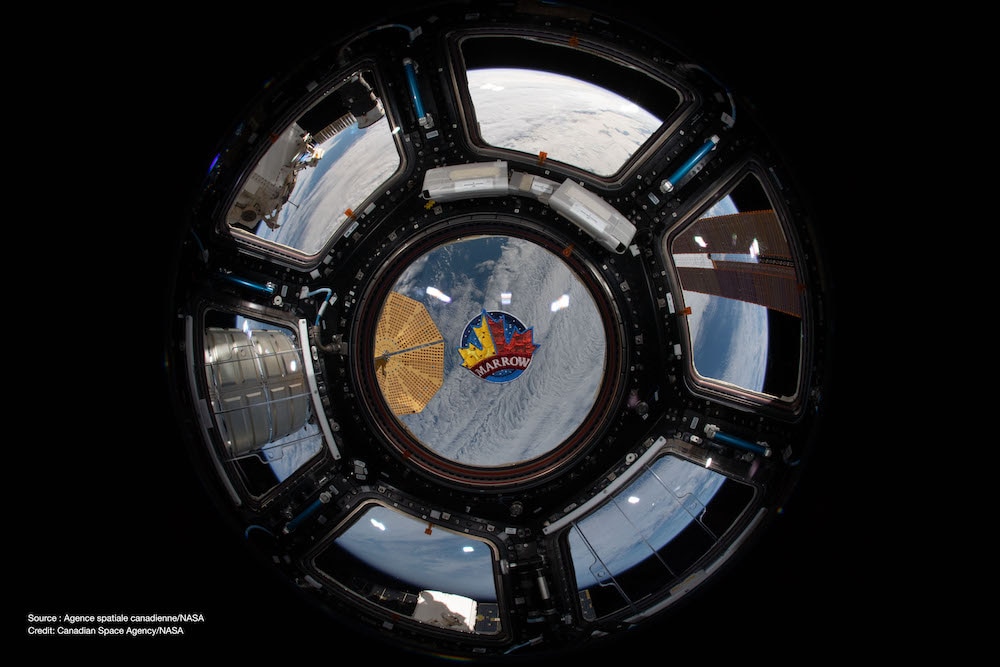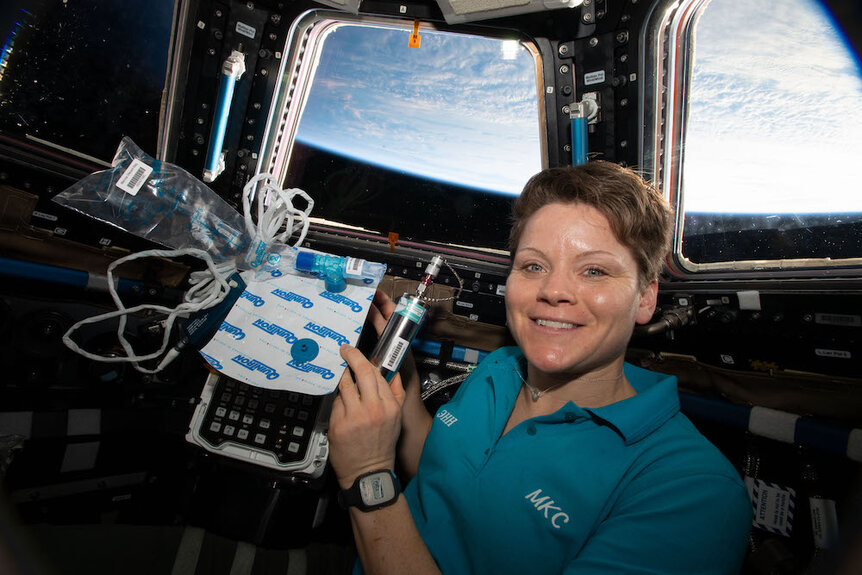Create a free profile to get unlimited access to exclusive videos, sweepstakes, and more!
Space travel wreaks havoc on red blood cells, even after astronauts come home
If you want to go to space, prepare to have your blood messed with.

Humans evolved, alongside every other animal on our planet, for the specific environmental conditions on Earth. While those conditions are variable over long timespans, they don’t’ change all that much during a human lifetime. For the most part, the world you were born into is the one in which you remain.
That changes, of course, if you leave the planet, something only a small fraction of our species has accomplished, and only over the last 50 or so years. When that happens, the impact on the body can be rapid and substantial. From our earliest journeys into space, we noticed that astronauts inevitably experienced higher levels of blood cell death — hemolysis — leading to anemia when they returned home.
A recent study by Guy Trudel, a professor of medicine, surgery, and biochemistry from the Bone and Joint Research Laboratory at the Ottawa Hospital Research Institute, and colleagues, seeks to better understand the cause and consequences of space anemia in astronauts. Their findings were published in the journal Nature Medicine.
The study, funded by the Canadian Space Agency, gathered data from 14 astronauts before, during, and after 6-month missions to the International Space Station. The existence of hemolysis among astronauts has been well-known since the earliest missions, dating to before the Apollo program. Prior to this study, it was believed that hemolysis occurred as a result of fluid shift once astronauts arrived in space. Astronauts lose about 10 percent of the total fluid in their bodies, so a corresponding decline in red blood cells was expected and thought to be explained. The findings of the current study, however, reveal a larger and more complex picture.
“We were quite happy with the previous explanation, and we didn’t see a knowledge gap on space anemia,” Trudel told SYFY WIRE. “These results change everything. We now have a large knowledge gap on anything after six months. During a one-year mission or longer, we don’t know what will happen.”
Instead of red blood cell destruction happening as a result of the fluid shift, it’s now known that it is a primary effect of being in space. The astronaut participants of the study could only provide data as early as their fifth day in space, but it’s believed that hemolysis occurs immediately.
On Earth, each of our bodies destroys about 2 million red blood cells each day and replaces them with new ones. In space, astronauts lose about 3 million per day, an increase of 54% and their bodies have to increase red blood cell production to bridge the gap.
While in space, the impact is minimal. Total red blood cell counts are lower, but so is the total fluid so they don’t meet the criteria of anemia. Trudel likens it to the loss of muscle mass while in space.
“You have lower muscle mass, but it doesn’t matter in space. Then when you get back to Earth you notice the loss of muscle,” Trudel said.
A similar phenomenon occurs with the red blood cells, and it happens even on short-duration flights. Those astronauts who spend 5 to 10 days in space find themselves anemic when they return to Earth. Moreover, the impact on the body lasts for at least a year, although to a lesser degree. The 14 astronauts who participated in the study still exhibited hemolysis at rates 30% higher than pre-flight a year after returning from orbit.
“The long term effect is about half what we had in space compared to pre-flight,” Trudel said. “We have to think of the structural changes. You have this increased turnover going on for six months, and now something in your body is different. It could lead to changes in the structure of your organs, changes to bone marrow, the spleen, or the liver.”
What’s unclear at this point is what precisely is driving the destruction of red blood cells. It could be microgravity, increased exposure to radiation, or the lack of Earth’s magnetic field impacting the blood. Trudel stated that some hypotheses are stronger than others, but we’re not yet sure the mechanism, outside of general exposure to space.
This knowledge has implications on long-duration missions like those heading to Mars or elsewhere in the solar system. When all goes well, the body’s natural stores pick up the slack while on-mission, but in the event of acute trauma or once landing on another world, that may not be the case.
Further study is needed to uncover the precise cause of blood cell death in order for us to develop treatments or preventative remedies before we can safely venture to more distant worlds.



























